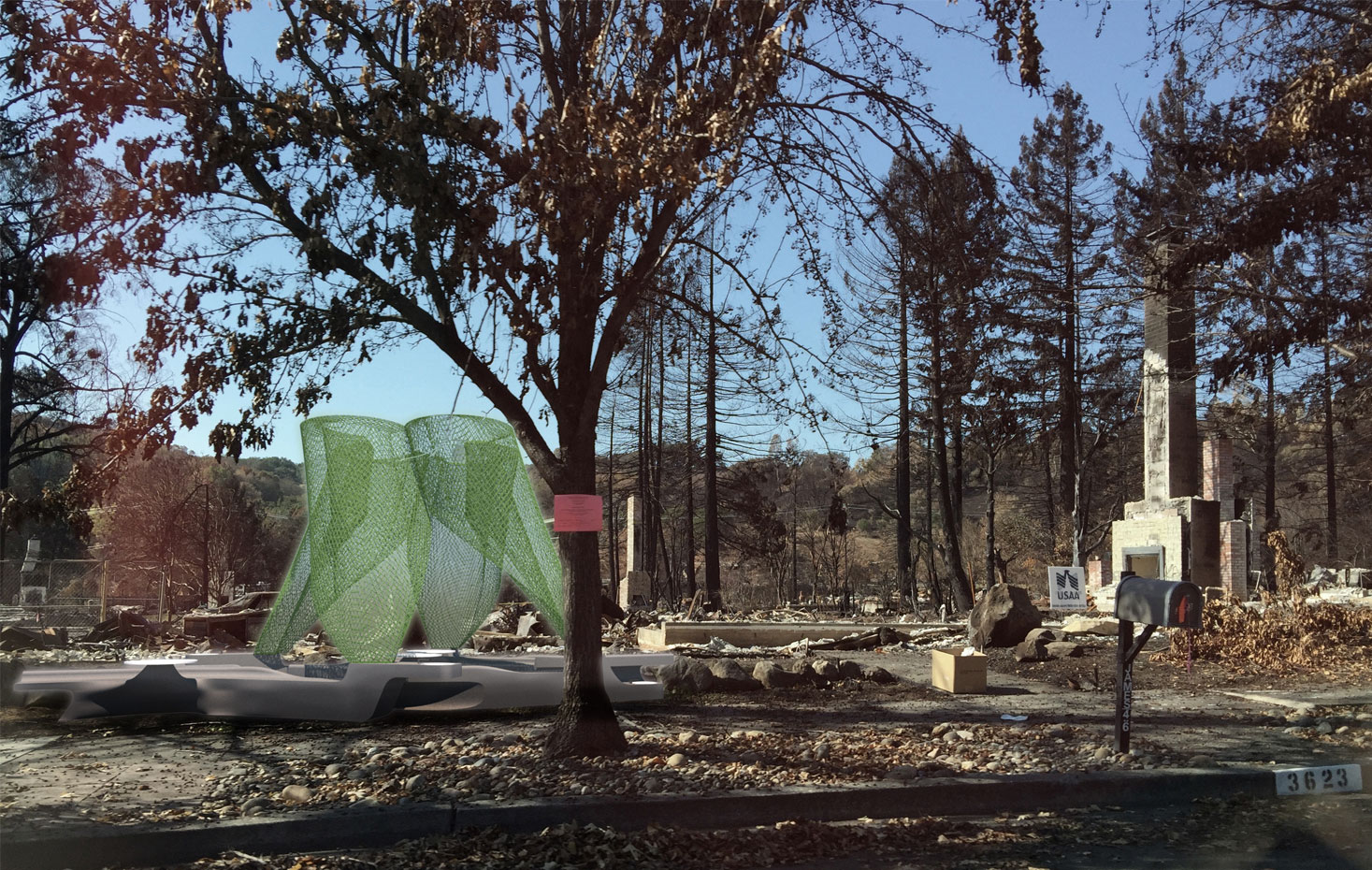Clover




















In the fall of 2017, one of our clients lost their house to the Santa Rosa wildfires. Not long after, they asked us to drive up from San Francisco and talk about designing a new house on the same site. The landscape was eerie, all ashes and chimneys and bent, burnt, broken things.
As we began the process of redesign, it occurred to us that in the wake of a terrible fire like this, those planning to rebuild had nowhere to meet with an architect or contractor in the vicinity. That got us to thinking about a way to create a prototype temporary shelter that could be easily erected and provide a place to talk, go over drawings, perhaps even charge a phone or a laptop. Neighbors could use them for community gatherings. More than anything, such a structure would serve as a sign of new life or growth for a devastated area.
We like to keep pushing the boundaries, experimenting with new ideas, keeping sharp by giving ourselves these kinds of design challenges. And at the same time, as climate change continues to rewrite the rules, designers need to keep innovating to prepare for the future.
Architecture has an essential role to play in giving fire-prone communities the resilience they need to adapt.



